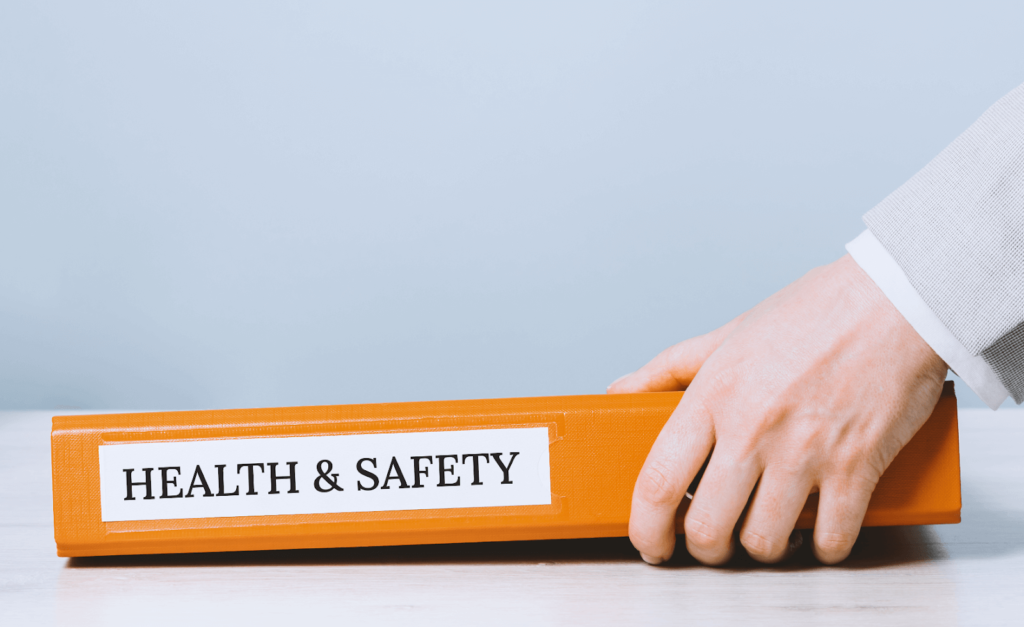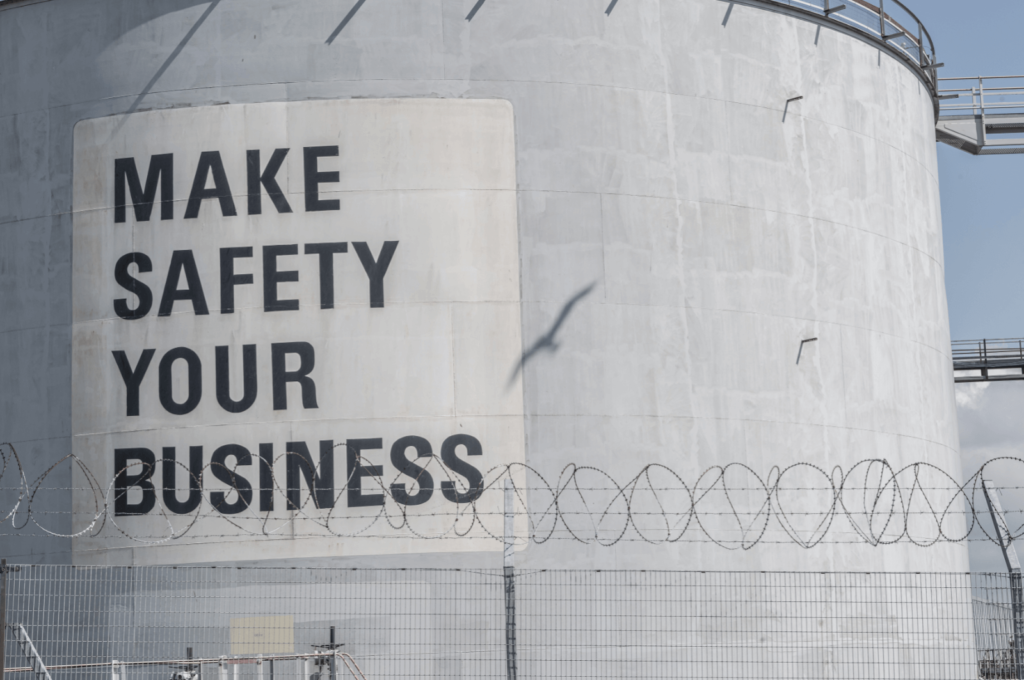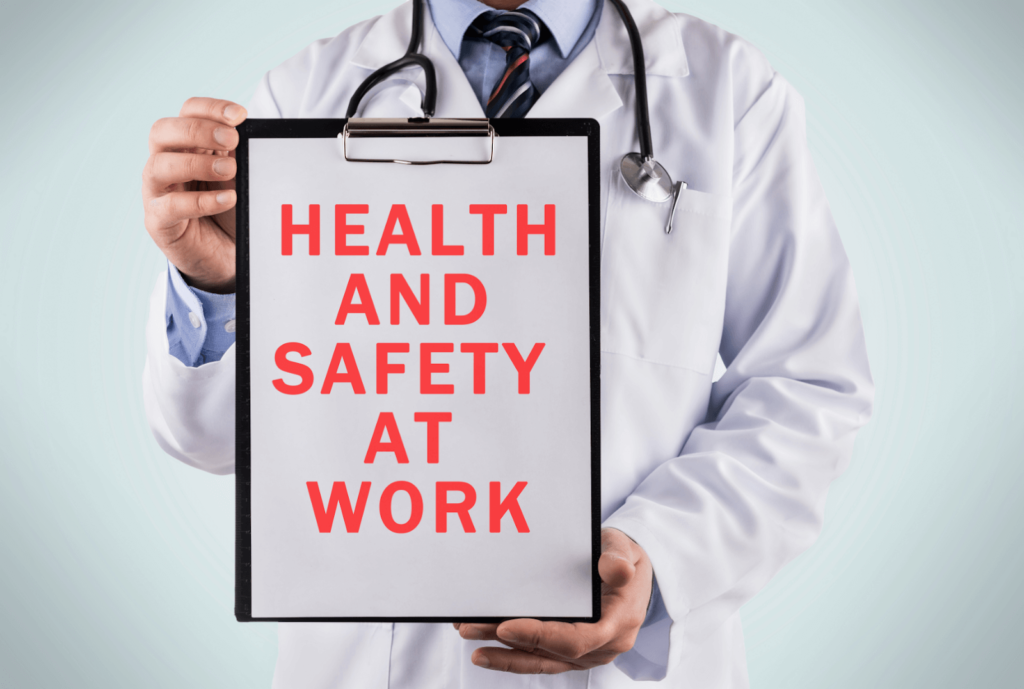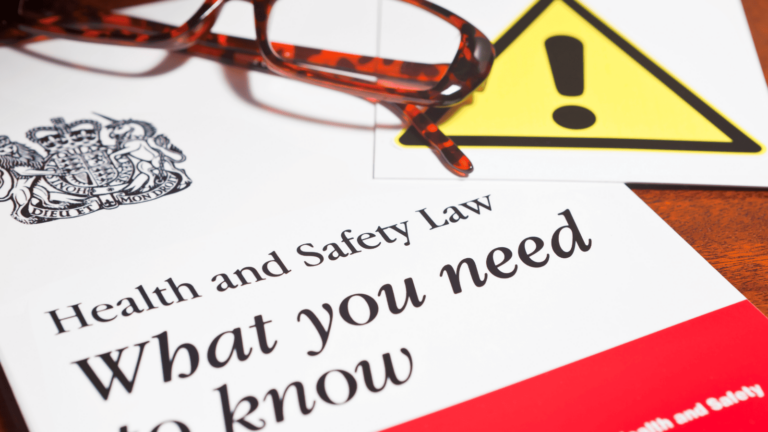- Why Verature?Find out why Verature is the best system for continuous contractor compliance.
- Arrive, Work & Stay Safe
- Removes Paper & Spreadsheets
- Tracks Key Contractors
- Instant 360 Visibility
- Contractor Management Dashboards
- Why Contractor Management Software
- Our Customer Reviews
- Pricing
We don’t hide behind fancy sales teams before we tell you, our prices.- Clients
See who we are working with and what they have to say about Verature.- Resources
Check out our blog, useful guides, whitepapers and product videos.- Prequalification and Induction Guide
- Contractor Compliance Guide
- Mini-Audit your Permit to Work System
- Health and Safety Audit Checklist
- Resource Library
- Blog
Book a demo
Integrating Health and Safety into Your Company Culture
In today’s fast-paced work environments, the significance of prioritising health and safety cannot be overstated. According to the Health and Safety Executive, an estimated 1.7 million working people in the UK suffered from work-related ill health in 2022, leading to a staggering 38.8 million working days lost. These statistics highlight the urgent need for organisations to embed health and safety into their core values.
Integrating health and safety into company culture not only mitigates risks but also fosters a more productive and engaged workforce. By prioritising health and safety, businesses can significantly reduce accidents, enhance productivity, and improve employee morale.
The Benefits of a Strong Health and Safety Culture
Reduced Accidents and Injuries
A robust health and safety culture directly correlates with a decrease in workplace incidents. Research indicates that organisations with comprehensive health and safety programmes experience up to a 29% lower absenteeism rate compared to those without such initiatives. By implementing effective safety measures, businesses can create an environment where employees feel secure, ultimately leading to fewer accidents and injuries.
Increased Productivity
A safe work environment is conducive to higher productivity levels. When employees are confident in their safety, they are less likely to experience disruptions caused by accidents or health issues. Studies have shown that a 1% improvement in employee health can result in a 2% increase in productivity. By prioritising health and safety, organisations can enhance operational efficiency and drive better business outcomes.
Improved Employee Morale
The well-being of employees is intrinsically linked to their job satisfaction. A strong health and safety culture not only protects employees but also demonstrates that the organisation values their welfare. This commitment fosters a sense of loyalty and engagement among staff, leading to improved morale. Employees who feel safe and valued are more likely to contribute positively to the workplace, enhancing overall performance.
Enhanced Company Reputation
A commitment to health and safety can significantly bolster a company’s reputation. Organisations that prioritise safety are more attractive to potential employees and clients alike. A strong safety record can differentiate a company in a competitive market, making it easier to attract top talent and secure new business opportunities. Furthermore, a positive reputation for safety can lead to increased customer trust and loyalty, ultimately benefiting the bottom line.
Making Health and Safety a Core Value
Integrating health and safety into a company’s culture requires a concerted effort from leadership and active participation from employees. By establishing health and safety as a core value, organisations can create an environment where safety is prioritised, leading to long-term benefits for both the workforce and the business.
Leadership Commitment
Setting the Tone from the Top
Leadership plays a pivotal role in establishing a safety-first mindset within an organisation. When leaders prioritise health and safety, they set a clear expectation that these values are integral to the company’s operations. Their attitudes and behaviours are often mirrored by employees, making it essential for leaders to model safe practices consistently. This commitment can manifest in various ways, such as openly discussing safety during meetings, participating in safety training, and visibly supporting safety initiatives on the ground.
Allocating Resources
For health and safety initiatives to be effective, leaders must allocate sufficient resources, including time, personnel, and financial investment. This commitment demonstrates to employees that the organisation values their well-being and is willing to invest in creating a safe working environment. By providing the necessary tools and training, leaders can empower employees to take ownership of their safety and that of their colleagues.
Employee Engagement
Involving Employees in Safety Initiatives
Empowering employees to participate in safety discussions and decision-making processes is crucial for fostering a strong health and safety culture. This can be achieved through the establishment of safety committees, regular safety meetings, and encouraging employees to share their insights and experiences. By involving employees in these initiatives, organisations can harness their knowledge and perspectives, leading to more effective safety solutions and greater buy-in from the workforce.
Creating Feedback Mechanisms
Open communication channels are essential for reporting safety concerns and suggestions. Establishing mechanisms for employees to voice their opinions, such as anonymous reporting systems or regular feedback sessions, can help identify potential hazards and areas for improvement. This transparency not only enhances safety but also fosters trust between employees and management, reinforcing the idea that everyone has a role in maintaining a safe workplace.
Continuous Improvement
Regularly Reviewing Policies and Procedures
Health and safety protocols should not be static; they require ongoing assessment and updates to remain effective. Regularly reviewing policies and procedures ensures that they adapt to changing circumstances, such as new regulations, emerging risks, or lessons learned from incidents. This proactive approach helps organisations stay ahead of potential issues and reinforces the commitment to continuous improvement in health and safety practices.
Adapting to New Challenges
The workplace is constantly evolving, and organisations must be prepared to address new health and safety challenges as they arise. This may include adapting to technological advancements, changes in workforce demographics, or shifts in industry standards. By staying informed and responsive to these changes, organisations can maintain a robust health and safety culture that prioritises employee well-being and operational efficiency
The Role of Training, Communication, and Recognition
Effective integration of health and safety into company culture relies heavily on comprehensive training programmes, clear communication channels, and recognition systems that reinforce the importance of safety practices. By investing in these areas, organisations can create a well-informed and engaged workforce that actively contributes to maintaining a safe working environment.
Training Programs
Comprehensive Safety Training
Regular safety training sessions are essential for ensuring that all employees are equipped with the knowledge and skills necessary to work safely. These training programmes should cover a wide range of topics, including hazard identification, risk assessment, emergency procedures, and safe work practices. By providing comprehensive training, organisations can empower employees to take ownership of their safety and that of their colleagues, ultimately reducing the risk of accidents and injuries.
Tailored Training for Specific Roles
While comprehensive safety training is crucial for all employees, organisations should also consider implementing role-specific training to address unique risks associated with different job functions. For example, employees working in high-risk areas or operating specialised equipment may require additional training to mitigate specific hazards. By tailoring training to the needs of individual roles, organisations can ensure that employees have the necessary knowledge and skills to perform their tasks safely.
Effective Communication
Establishing Clear Safety Protocols
Clear and accessible safety guidelines are essential for ensuring that all employees understand their responsibilities and the expected safety practices within the organisation. These protocols should be communicated in a manner that is easily understood by all employees, regardless of their language proficiency or literacy level. By establishing clear safety protocols, organisations can create a shared understanding of safety expectations and promote a culture of accountability.
Utilising Multiple Communication Channels
Effective communication is not limited to a single channel; organisations should utilise various methods to disseminate safety information. This may include regular safety meetings, newsletters, digital platforms, and visual aids such as posters and signage. By using multiple communication channels, organisations can ensure that safety messages reach all employees and reinforce the importance of safety practices throughout the organisation.
Recognition and Reward Systems
Acknowledging Safe Practices
Recognizing employees who prioritise safety is a powerful way to reinforce the importance of safe behaviours and encourage others to follow suit. This recognition can take various forms, such as safety awards, public acknowledgements during meetings, or even small tokens of appreciation. By acknowledging safe practices, organisations can boost employee morale, foster a sense of pride in safety achievements, and create a positive feedback loop that encourages ongoing safe behaviours.
Incentives for Safety Compliance
In addition to recognizing safe practices, organisations can also implement reward systems to encourage adherence to safety protocols. These incentives can include bonuses, promotions, or other tangible rewards for employees who consistently demonstrate a commitment to safety. While financial incentives can be effective, organisations should also consider non-monetary rewards, such as additional training opportunities or special privileges, to appeal to a broader range of employee motivations.
Overcoming Challenges and Dealing with Resistance
Understanding Individual Differences
It is important to recognise that not everyone will fully embrace the health and safety culture at the same pace. Individuals may have different attitudes, beliefs, and experiences that influence their approach to safety. By understanding these individual differences, organisations can tailor their communication and engagement strategies to address specific concerns and resistance points. This approach helps to create a more inclusive and supportive environment for all employees.
Persistent Efforts to Influence and Educate
Integrating health and safety into company culture is an ongoing process that requires persistent efforts to positively influence and educate employees. Organisations should be prepared to continually reinforce safety messages, provide additional training, and address emerging challenges as they arise. By maintaining a consistent and proactive approach, organisations can gradually shift attitudes and behaviours towards a stronger safety culture.
Applying HR and IR Policies
In some cases, organisations may need to apply HR and IR policies to ensure compliance with safety protocols. This may involve disciplinary measures for serious or repeated safety violations, as well as clear communication of consequences for non-compliance. While these policies should be a last resort, they can help to maintain a consistent and fair approach to safety management and reinforce the organisation’s commitment to a safe working environment.
Conclusion
Integrating health and safety into company culture is not merely a regulatory obligation; it is a strategic imperative that can yield significant benefits for both employees and the organisation as a whole. By prioritising health and safety through strong leadership commitment, active employee engagement, comprehensive training, effective communication, and recognition systems, organisations can create a workplace where safety is ingrained in every aspect of operations. The resulting culture not only reduces accidents and injuries but also enhances productivity, boosts employee morale, and strengthens the company’s reputation.
Ready to Elevate Your Safety Culture? Discover Verature!
Are you looking to enhance your organisation’s health and safety culture? Verature’s contractor management and safety software provides the tools you need to streamline safety processes, ensure compliance, and foster a proactive safety environment.
With features designed to empower both leadership and employees, Verature can help you make health and safety a core value within your organisation.
Take the first step towards a safer workplace today! Explore Verature Now and see how our solutions can transform your approach to health and safety management.
Book a demoFind out if you’re ready with our Verature Onboarding Kit
Not sure if Verature is right for you? We understand it’s not easy to make a decision on a new system, but that’s why we’ve created our Onboarding Kit to make that that process simple.
Check our package details
Find out no matter what package you choose, you’ll be getting the best features you need for you and your team so you can have continuous contractor compliance.
Make it your own
You’ll get to see and choose your customisation options, and check out the available add-ons and extras so the system is exactly what you want and need.
Quickly getting you started.
Keeping this guide with you, and working closely with us, we can walk you through each step so you can be completely up and running with your own Verature system.
More reasons to use Verature
It’s easy to get started.
Step 1
Book a demo of Verature with the team.
Step 2
We’ll chat through your requirements and see if Verature is right for you.
Step 3
We’ll send you demo access and our onboarding kit to help you decide what you need.
Step 4
You decide if we’re right for you. No pushy sales calls.
Step 5
Like what you see and hear? Let’s get you onboarded with Verature!












